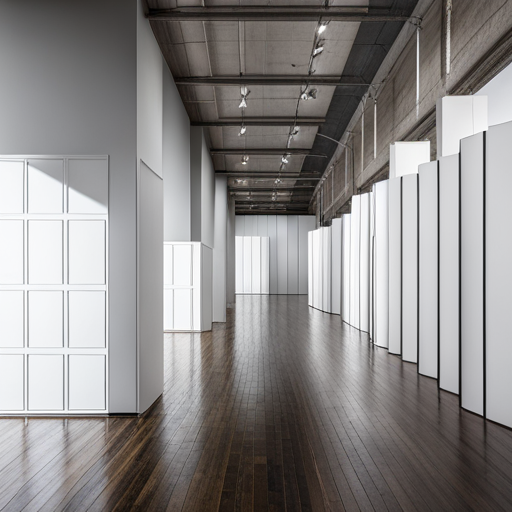In this section, you will find an ever-growing list of existing AI-powered or enhanced tools for space-making. Most of these AI applications are considered to be “off-the-shelf” tools, as software that are relatively standardized and produced for general use (as a ready-to-use application in contrast to custom-made software or applications that need a particular technical knowledge to run). They are also mostly dedicated to the fields of design, architecture and 2D and 3D image generation and modelling. Our aim is to map these applications and foresee possible expansions for other space-making practices in the cultural sector, with a focus on exhibition-making.
PlanFinder is a software plugin for CAD and BIM software, that enables designers and architects to automate floorplan creation. Planfinder sets two very specific functionalities: to fit existing plans to a particular need, filtering outcomes based on user preferences, and furnish a plan from scratch by predicting room functions, locations of doors, and furniture. The aim of these tools is to accelerate the design process through the implementation of Machine Learning. The ML models are trained on a dataset with existing plans and are limited to generating rectangular and single-floor plans of apartment units, with the option to override suggestions.
ZoeDepth is a deep-learning AI model for relative and metric depth estimation from a single image, developed by Intelligent Systems Lab Org. Depth estimation measures the distance of each pixel in relation to a reference point (such as a camera), which allows applications such as ZoeDepth to generate a depth map that can potentially be used to create 3D objects and environments. Their flagship model, ZoeD-M12-NK, is pre-trained on 12 datasets using relative depth and fine-tuned on two datasets using metric depth. The code and pre-trained models are publicly available.
ARChiTECTURES is a generative AI-powered building design platform that aims to help designers and architects automate the creation of 2D and 3D plans and models. Although they promote an acceleration of current modes of production, the developers sustain an inherent human-machine collaboration in which AI proposes solutions based on a project’s needs, leaving architects to focus more on decision-making and a project’s added values. Through this tool, designers and architects still have control over quantitative aspects of the design and on the output’s needed adaptations but are limited to the tool’s prescribed actions. Said to attend to designers’ and architects’ needs, there is, like in any application, clearly a limit to what a platform can do.
More upcoming entries soon!
